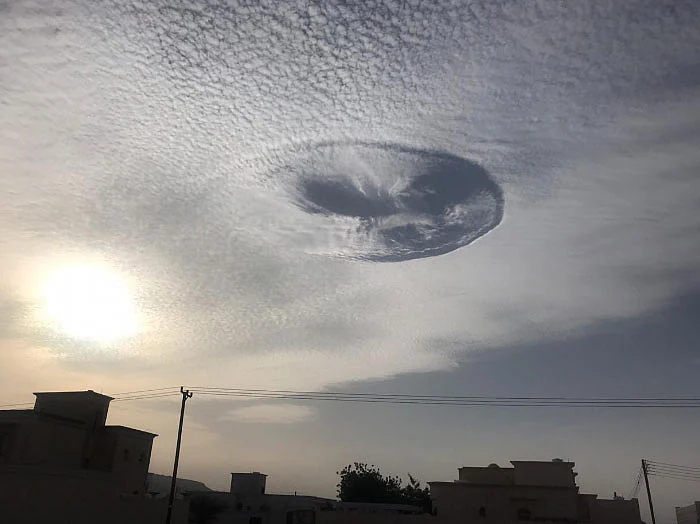What was that mysterious hole in the UAE sky?
A video that went viral on UAE social media showed a strange occurrence in Al Ain's sky

Also In This Package
Dubai: Is that a hole in the sky? And why is there a gap?
If you think there might be something amiss with the world and the folktale of Chicken Little comes to mind, along with the infamous phrase “The sky is falling!”; don’t worry. It couldn’t be further from the truth.
During Sunday’s heavy bout of rain that affected various parts of the country, residents in Al Ain witnessed a phenomenon that has been rarely caught on camera in the UAE.
Sharjah-based astronomer and meteorologist Ebrahim Al Jarwan posted the short video clip on his personal Twitter account, and explained that the so-called-hole in the sky is called a fallstreak hole.
Al Jarwan tweeted about this rare and beautiful phenomenon, which was seen on Sunday morning in Al Ain city.
Also known as a hole punch cloud, the fallstreak hole is a large gap, usually circular or elliptical, that can appear in cirrocumulus or altocumulus clouds.
The fallstreak hole was also spotted above Buraimi and Maḩḑah, northwest Oman.
According to the US National Weather Service (NWS), the fallstreak hole is a “combination of amazing and rare cloud formation.”
When a hole punch cloud appears, it can form to look like UFOs, sky holes and cloud circles.
According to the NWS website, a fallstreak hole forms when, “high to mid level clouds, such as altocumulus, are often composed of tiny water droplets that are much colder than freezing, but have yet to freeze.
“These ‘supercooled’ water droplets need a ‘reason’ to freeze, which usually comes in the form of ice crystals. Planes passing through the cloud layer can bring these ice crystals. Once the ice crystals are introduced, the water droplets quickly freeze, grow and start to fall”.
The NWS further added that a hole is then left behind, which will start to expand outward as neighboring droplets start to freeze.
Sign up for the Daily Briefing
Get the latest news and updates straight to your inbox
Network Links
GN StoreDownload our app
© Al Nisr Publishing LLC 2025. All rights reserved.